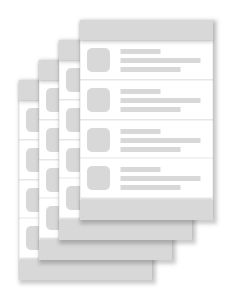Tài liệu này trình bày cách sử dụng đích đến của hộp thoại để đưa ra một số cân nhắc riêng về cách bạn cần quản lý ngăn xếp lui.
Tổng quan
Một hoặc nhiều đích đến của hộp thoại chỉ có thể tồn tại ở lớp trên cùng của ngăn xếp lui.
Nguyên nhân là do khi người dùng di chuyển tới một đích đến không phải là đích đến của hộp thoại, NavController sẽ tự động làm bật mọi đích đến của hộp thoại ra khỏi lớp trên cùng của ngăn xếp. Nhờ vậy, đích đến hiện tại luôn hiển thị đầy đủ ở trên các đích đến khác trong ngăn xếp lui.
Các đích đến có thể là đích đến được lưu trữ, đích đến của hoạt động hoặc đích đến của hộp thoại.
Ví dụ
Nếu ngăn xếp lui chỉ bao gồm các đích đến được lưu trữ lấp đầy máy chủ điều hướng và người dùng di chuyển tới một đích đến của hộp thoại, thì ngăn xếp lui này sẽ có dạng tương tự như hình 2:

Sau đó, nếu người dùng di chuyển tới một đích đến khác của hộp thoại, thì đích đến này sẽ được thêm vào lớp trên cùng của ngăn xếp lui, như trong hình 3:

Dialog ở trên cùng.Nếu sau đó người dùng di chuyển tới một đích đến không nổi, thì đích đến của hộp thoại sẽ bật lên từ lớp trên cùng của ngăn xếp lui trước rồi mới chuyển tới đích đến mới, như trong hình 4:

Dialog bật ra và đích đến mới được thêm vào.
